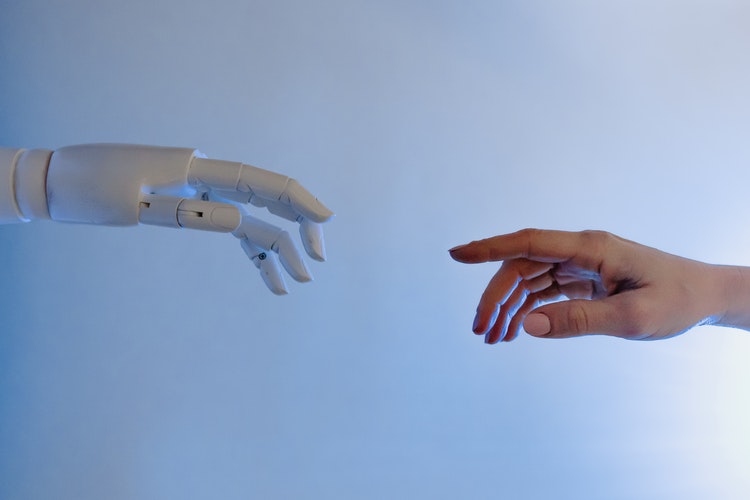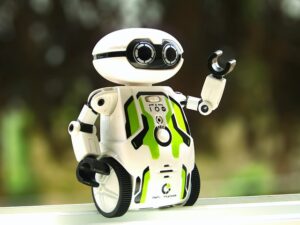The reality of artificial intelligence (AI) and robotics is something that is revolutionizing how we all work, and play. But new technologies are starting to make a dynamic impact on saving lives too. For example, robotic technology in the healthcare industry has been crucial in saving lives by detecting diseases, aiding in surgeries, and patient rehabilitation.
“Today, robotics is also starting to lead the way for first responders; essentially protecting and rescuing people in critical circumstances. ”
Read further about how robots are coming to the rescue in life-threatening situations.
How First Responders Save Lives Using Robotics
Emergency responders, firefighters, and law enforcement officials often pay the ultimate price to keep communities safe and rescue people in dire situations. Nothing can replace these brave men and women who risk their lives every day.
However, robotics are increasingly lending aid to first responders, making their jobs easier and increasing the success rate of rescues. Here are a few examples of how robots are changing the way emergency responders save lives in times of crisis.
Law Enforcement and Bomb Threats: While the use of robotics in law enforcement might be a polarizing topic of debate, there’s no denying they can play a positive role in saving lives. For instance, robots are pivotal in the event of bomb threats and detection.
These bomb-rescue bots are uniquely designed to detect incendiary and explosive devices and they can also disable, dispose or safely deploy life-threatening bombs. In fact, a tactical robot helped capture the Boston Marathon bombing suspect, Dzhokhar Tsarnaev.
Search and Rescue: Robots are increasingly paving the way to searching out victims in disaster situations. For example, search and rescue robots were a critical advantage to searching for survivors through the rubble after the devastation of 911. Roaming robots and micro-robots are able to enter areas inaccessible to first responders, such as collapsed buildings, hazardous building fires, confined spaces, or unbreathable conditions.
Water Rescues: Any first responder will tell you that water rescue situations pose extreme challenges. The risk of drowning or getting hypothermia in cold waters makes rescuing survivors at sea a harrowing proposition. However, water rescue robots can be released into treacherous waters to save the day. These resilient bots are impervious to dangerous water conditions. They are directed to survivors and serve as a buoy or flotation device, allowing survivors to grab hold and be transported to the safety of an emergency vessel or helicopter. Thanks to these tough water rescue robots, the survival rate in water accidents is greatly increased.
Hazardous Environments: Specialized robotic devices such as the Sarcos inspection bot can be sent into potentially hazardous environments. Powerful robots like these are responsible for saving lives because of their advanced hazmat applications. These life-saving machines detect radiation levels or other hazardous conditions and report back to the operator, informing them if conditions are safe to enter. For example, inspection robots were used in cleanup efforts and measuring radioactivity after the Fukushima Daiichi nuclear disaster in 2011.
Warfare: Robots have been cited for saving lives in times of war by detecting bombs, maintaining safety zones, and clearing areas littered with potential hazards. For example, in WWII, booby traps were put into play and triggered by a hidden sensor. This covert tactic ended the lives of many unsuspecting soldiers. Today, similar bomb traps are used by enemy factions, and military robots effectively sniff out these hidden threats. Military robots utilized during wartime have significantly reduced the loss of a soldier and civilian lives.
Natural Disasters: Some rescue robots are specially designed to manoeuvre in places impossible to reach by humans. They are also equipped with camera feeds that inform operators about conditions and potential survivors after a natural disaster. For instance, emergency responders deployed robots after the catastrophic 7.1 magnitude earthquake that shattered the city of San Juan Raboso in central Mexico in 2017. These rescue robots snaked their way through the debris to assess damages and they were also crucial in finding survivors in this disaster.
More Robot Rescues on the Horizon
These are just a few examples of how robots can save lives during a crisis – and it’s just the beginning. As technology continues to improve, the world will see more advanced rescue robots on the scene and helping save lives when calamity strikes. While the human element is incomparable when it comes to rescuing and saving lives, robots play a pivotal role in making the world a safer, better place in which to live.










